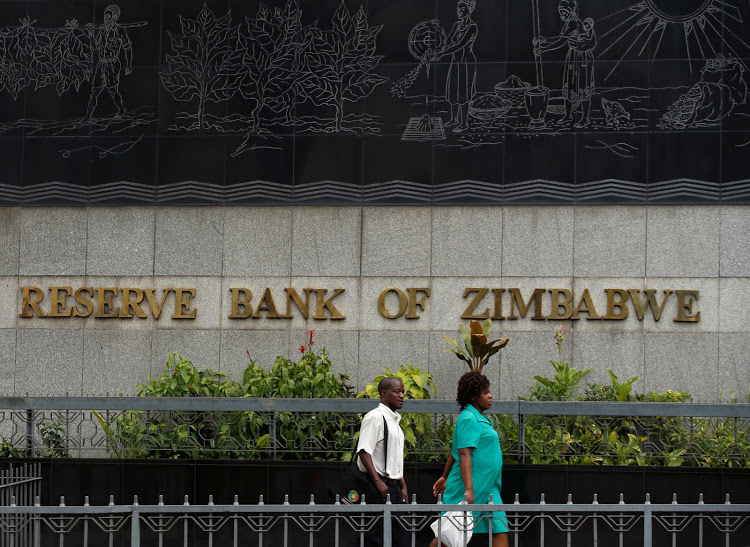
Runaway prices have been a persistent problem in Zimbabwe, which has the world’s second-highest inflation rate [Philimon Bulawayo/Reuters]
Harare, Zimbabwe – The statistics agency in Zimbabwe will not publish annualised inflation numbers until February of next year, to enable the government to collect more data comparing price information on a like-for-like basis, a top official said amid rising unrest over skyrocketing costs and goods shortages.
In a televised midterm fiscal policy review on Thursday, Finance Minister Mthuli Ncube said that Zimstat, the nation’s statistical body, will release the numbers in 2020 because prices are no longer measured in United States dollars, making the figures incompatible.
Zimbabwe in June outlawed the use of foreign currencies in domestic transactions, and made the new Zimbabwe dollar – also called the“zollar” or “Zimdollar” – the sole legal tender in the country.
“The change in the currency regime from multi-currency [system] to Zimbabwe dollar has definitely impacted on the base for calculation of [consumer price indices], and hence inflation,” said Ncube.
“Given this transition, Zimstat will defer publication of year-on-year inflation, while building up data of prices in mono-currency for a period of 12 months to February 2020. This will ensure that we compare like with like in terms of currency regimes,” he added.
For now, Ncube said consumers should focus on published month-on-month numbers to gauge price movements.
While the minister’s decision may make sense from a technical point of view, to ordinary Zimbabweans the move was merely an attempt to conceal what is likely to be a massive jump in prices over the next six months.
‘Visible scars’
The troubled Southern African country adopted the US dollar in 2009 after hyperinflation decimated the value of the original Zimbabwean dollar, which was demonetised in 2015.
Annualised inflation in Zimbabwe surged to 175.66 percent in June, up from 97.85 percent in May.
On a monthly basis, consumer prices rose 39.9 percent in June, compared with 12.54 percent in May – raising the spectre of hyperinflation yet again. That threshold is defined as being when prices go up 50 percent in a month.
This is not the first time Ncube has rebased an inflation formula since taking office a year ago.
But if Zimstat had not changed its formula for measuring the consumer price index, the June reading – based on the old formula – would have landed the country in hyperinflation territory.
Additionally, the Southern African nation revised the basic data for its economy data last October, boosting its size by 40 percent to $25.8bn. This process – known as “rebasing” GDP – alters the methodology for calculating gross domestic product and has been used recently in several African countries such as Nigeria and Kenya.
Zimbabwe insisted again in May on a second rebasing after the adoption of the new currency in February.
“The story of Zimbabwe’s inflation has visible scars in our lives and deserves proactive and appropriate attention,” Ncube told lawmakers in the country’s parliament in the capital on Thursday afternoon.
“However, it is common cause that inflation is triggered by [the] running of huge budget deficits, financed through monetisation – which creates high money-supply growth,” said Ncube, referring to the government’s practice of printing large amounts of money.
The finance minister said Zimbabwe should rein in deficit spending and rebalance trade to prevent inflation.
“Attainment of a fiscal surplus, combined with a current account balance during the first half of the year, constitutes a firm road map to confidence-building much required by this economy,” he added.
‘Significant and uncontrolled’
Under former President Robert Mugabe, Zimbabwe ran a huge budget deficit and financed it with the issuance of Treasury bills and an overdraft facility at the central bank.
According to Ncube, this led to a “significant and uncontrolled” expansion of the money supply, spawning demand for foreign currency in both the formal and black markets.
He said the country’s fiscal health for the first half of the year was stable and largely in line with government targets, as monthly revenue collection exceeded expectations by 20.2 percent.
But total government spending came in over budget by 15 percent, owing to what Ncube called “inescapable and unforeseen expenditures”. These stemmed from still-pesky inflation, exchange rate fluctuations, drought and the Cyclone Idai disaster.
Some of the money went to cushioning allowances to civil servants paid in the first quarter and a cost-of-living adjustment implemented starting in April. Other funds were funnelled to subsidised mass transit and other infrastructure programmes.
Ncube said his Transitional Stabilisation Programme, an economic road map that mandates massive austerity measures, promises “strong, sustained and shared growth”.
But ordinary Zimbabweans blame budget-tightening and hopeless inflation for general hardships and bemoan a declining standard of living since President Emmerson Mnangagwa took over a year ago.

